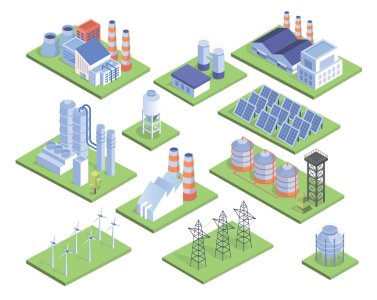Tech Talk with Dr Al: Energy
- Replies 3
Note from the Editor:
This article was kindly written for the SDC by member @Doctor Alan.
Introduction:
Once upon a time, we were told that all that was needed to make the world go around was Love. If only that were the case today. On the other hand, that commodity seems a bit scarce in certain parts of the world whose people seem bent on genocide and destruction.
Energy is what really makes the world turn, and luckily, we’ve always had more than our fair share of it. It all comes from the Sun and gets converted into different forms but is never ‘lost’.
Unfortunately, our planet is rather fragile, and it’s taken us almost too long to realise that we have to protect it from those intent on its destruction. Also, rather unfortunately, we have certain powerful people in key positions (or who will be) who are really too ignorant to ‘read the science’ or to believe those with vastly more intellect and to understand that mankind is the cause of the biggest threat to our existence we have ever known, and that is Climate Change.
However, energy may yet come to the rescue if we examine more of its forms and make use of it in the very near future. In this article, I want to examine all the forms we know of today and to speculate on further forms we have never used.
Forms of Energy:
Coal: This fossil fuel kick-started what is known as the ‘Industrial Revolution’. It’s dirty, and many good people have died in mining it. Burning it pollutes the atmosphere, and the only reason it’s still being used is because of the almighty dollar. The World Coal Association predicts that we will have another 150 years before it runs out, but many countries have already started phasing out coal as an energy source.
Oil: Another fossil fuel upon which all our modern society is based. It’s running out – in the US, ‘Peak Oil’, which is the point at which water has to be pumped down to force the last dregs of oil up from the ground, was reached some years ago. Saudi Arabia won’t say when they predict the onset of Peak Oil, but it could be quite soon. The most optimistic forecast is that we have about another 50 years of oil left as long as no new economically viable discoveries are made. (The depth of the oil may make a new discovery uneconomical). It’s oil that is used to produce all our plastics, and it is also needed for heavy transport. Steel production uses oil – around 46 barrels per car! Accordingly, our society really needs oil to sustain it at the moment. If we are unable to use oil at some point in the future, bioplastics can be made, and steel can be produced using Hydrogen Breakthrough Ironmaking Technology (HYBRIT). I have no information about the relative costs of using these processes.
Nuclear (Fission): Many countries use nuclear power to generate electricity in a sort of love-hate relationship. Some countries have phased them out, then brought them back in and vice-versa. France produces around 70% of its electricity from nuclear power, and of course, the USA has the most nuclear power plants. The fission reaction used by the plants produces radioactive waste that has to be disposed of and sealed for hundreds of years – this is probably the main drawback of the system. The old ‘nimby’ fear is prevalent here – ‘Not In My Back Yard’ – but it has to be put somewhere. We all remember the various nuclear disasters, meltdowns and so on – Three-Mile Island, Chernobyl, Fukushima – and these have had an emotionally negative effect on our desire to use nuclear power, although it is probably the most efficient form of energy.
Hydro-power: There are many hydro-electrical schemes throughout the world and our own ‘Snowy Scheme’ is a very good example. Usually, a dam is built across a river and the resulting lake forms is channeled through a turbine which s connected to an electrical generator. The resulting electricity is passed to the Grid.
Geothermal: Geothermal energy is produced by pumping hot water (that occurs deep underground) to the surface, where the reduced pressure turns it into steam. This powers turbines. Iceland takes advantage of this, and its geothermal energy source (enhanced by the proximity of volcanic action near the surface) allows it to power whole cities like Reykjavik. Unfortunately, for many countries, geographic restrictions and high costs prevent its use as a viable alternative form of energy.
Wind Power: China leads the field in Wind Power generation, followed by the US which produces about 1/3 of that originating in China, but many countries have huge ‘wind farms’ off-shore where the wind is a lot more constant. It is unfortunate that there are some really ignorant people in influential positions that insist that ‘wind-power causes cancer, head-aches’ and so on.
Solar Power: China is also number one but advances in technology that produce more efficient solar panels indicate that we will use this resource a lot more in the future. Australia has huge ‘solar power plants’ that have a huge number of solar panels to feed electricity straight to the grid. There is another type of solar power farm, and that is the ‘solar furnace’ that focuses light onto a central tower. Australia is well-suited to this type of energy.
Wave Power: Although this isn’t a particularly new form of energy, the uptake of wave power has been quite slow. Leaders in the field are Great Britain, Portugal, South Korea and Australia. Power is produced by the oscillations of the water, either up and down (floating turbine platforms or oscillation water columns) or back and forth (inverted pendulum devices).
Fusion Power: The Sun produces its energy by the fusion of hydrogen into helium. By forcing hydrogen atoms together, a helium atom is formed, and a huge amount of energy is released. On Earth, if we can fuse Deuterium (abundant in seawater) and Tritium (produced from the reaction of fusion-generated neutrons with lithium), we can generate fusion power.
Fusion power is:
- Environmentally friendly – no CO2 etc.
- Energy efficient – four times more energy per Kg of fuel than fission and four million times more energy than that of coal or oil!
- Safe – no melt-down problems like fission reactors.
- Recyclable materials – reactor materials can be recycled or reused within 100 to 300 years.
Raindrop Energy: I was quite surprised to see that a device from the City University of Hong Kong can generate 140 volts from a single raindrop, which is enough to power 100 small light bulbs. Called ‘Droplet-based electricity generators’, these devices use a transistor structure to convert raindrops into short bursts of electricity. This idea could possibly be built into every solar panel we install on our roofs. Also, the use of a micro-hydro turbine (MHT) is another method of converting rain energy to electricity. A rooftop rainwater energy-collecting system harnesses falling raindrops to generate power.
Other Energy Forms: Some people may have heard of Tesla – no, not the Elon Musk brand, but the actual genius behind alternating current, Nicola Tesla. If you haven’t heard of him, blame it on Edison, who was responsible for denigrating the work done by Tesla because Tesla managed to sell the idea of Alternating Current to J.P. Morgan (the great financier) in America against Edison’s Direct Current. Edison was not a very nice person – but that’s a whole other story! (Incidentally, it was actually Tesla who invented radio communication, not Marconi.) Tesla had the idea to build huge towers (like the Wardenclyffe Tower) that would transfer energy around the earth for all to use. It would have worked, too, but J.P. Morgan was not interested in altruistic motives – he wanted to make money, and ‘free electricity for all’ did not gel with his pecuniary philosophy. Tesla had over 100 patents on his inventions, and one of these was for an ‘energy collector’ device, like a solar panel, but that worked at night! To this day, nobody has been able to duplicate it despite Tesla being successful in all his other ideas. Thanks to Edison’s disparagement, Tesla died a pauper in a New York hotel.
Conclusion:
There’s no doubt that we can actually use our intelligence, such as it is, to look after our little planet, and it really doesn’t help when the decider for making decisions concerning how we do this is governed by the amount of money that can be made.
About the author: Having spent three years living in Australia in his youth, Alan returned to Australia in 1969 with his wife and young child. Holding a Bachelor of Engineering degree and a Doctor of Science Education degree, Alan has experience in flight simulations, Einsteinian physics, and inventing an ‘eye blink’ device that allows cerebral palsy patients to communicate. He even took a turn at acting, starring in a TV advert and landing supporting and lead roles in his local dramatic society plays. His short stories have been published in WA’s The Gingin Buzz for ten years, and his novel The Magic Hourglass is a work in progress. He and his wife have a lovely life in Brisbane and regularly visit their two children in Sydney’s West. You can read Alan’s full-length bio here.
Note from the Editor:
Love Alan’s writing and want to read more? You might also like to read:
Artificial Intelligence – Do We Need It?
Mars!
Alan G.’s Member Spotlight: ‘Almost Famous’
The Ice Cream Job: The Tech Guy – Dr Al
The Lucky Man: The Tech Guy – Dr Al
‘Ten Pound Pom’ Hostel Living: The Tech Guy – Dr Al
Many Happy Returns of the Day!
Reaching for the Stars!
Sportsmanship, Manners, and Respect
My great-grandfather’s journal of 1908: The Tech Guy – Dr Al
Christmases I’ve Had








